Whether it’s because you want a birth experience that is as natural as possible, you hate hospitals, or you don’t have sufficient insurance, you may be considering having a home or birth center birth. It’s a big decision to make, and there is certainly plenty of debate over the issue. I’ll go over some data and then I’ll explain why I chose to have a natural hospital birth and plan to do it the same way next time.
Considering natural birth? I’ve created a worksheet that will guide you to the best decision for you – Get it here!
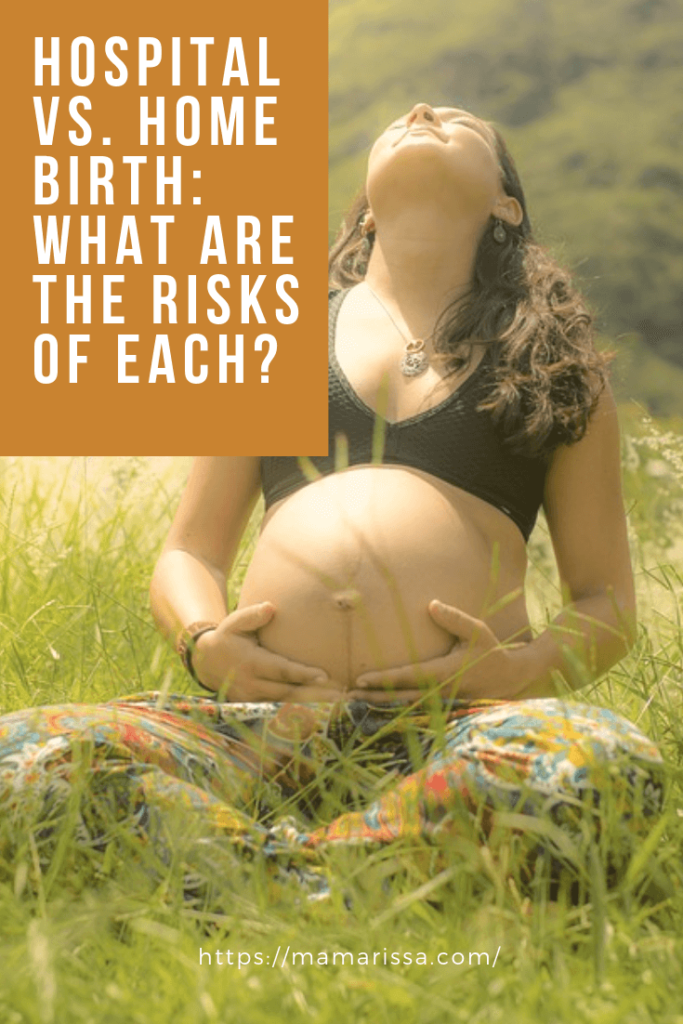
Note: All of my research is based on the data available for the United States specifically. There are different practices and outcomes in hospital, birth center and home births in other countries which are not addressed in this post.
The Risks of Hospital vs. Home
Although home births and birth center births are becoming more common in the U.S., 98.8% of births still take place in a hospital with 86% of those births being attended by a physician (rather than a midwife). Home and birth center births are only recommended for healthy pregnant women who have no complications, yet 85% of women who give birth in a hospital are exactly that (Source). This means that 85% of the births that occur in a hospital could have potentially been approved for a home or birth center birth.
Some people might say a home birth is risky, but it must be considered that hospital births carry their own set of risks. What is most important to you will help determine which risks you are more or less willing to take. Let’s take a look at the numbers associated with some of the risks on both sides.
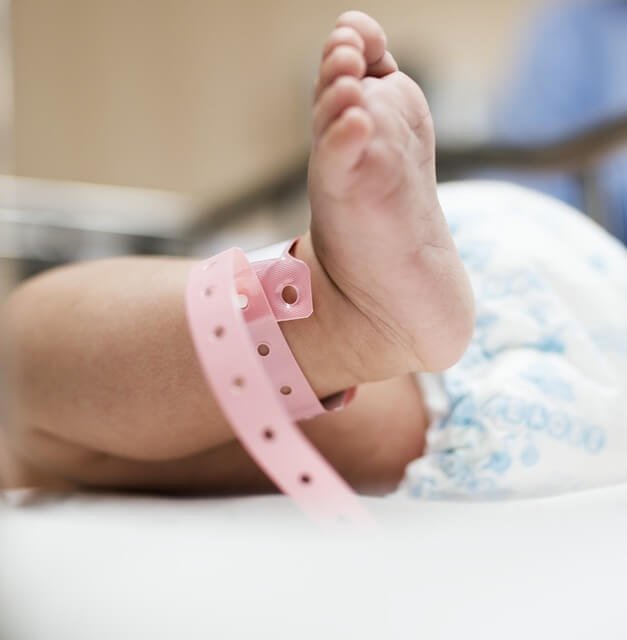
Outcomes for Baby
Early Delivery
Although giving birth a week or two before your due date may not seem like a big deal and may even sound like a blessing, as often happens when we mess with nature, there can be consequences to forcing an early delivery via induction or c-section.
The New England Journal of Medicine published a study conducted in Oregon involving 79,727 births reviewing information for both planned in-hospital births and planned out-of-hospital births (this includes deliveries that were planned to be completed at home or a birth center but ended up being competed in a hospital) for the years 2012 and 2013. One of the study’s findings was that planned in-hospital births were more likely than planned and completed out-of-hospital births to occur in the 37-38 weeks gestation range rather than further along in the pregnancy.
Deliveries during this early term are riskier for the baby as was confirmed in a study conducted in New York for the period 2006-2008. The study showed that babies being delivered during early term (37-38 weeks) were more likely than babies delivered at term (39-40 weeks) to experience hypoglycemia and require NICU (Neonatal Intensive Care Unit) admission, respiratory support, IV fluids, IV antibiotics, and mechanical ventilation or intubation. Not surprisingly, c-sections were often involved in these early deliveries.
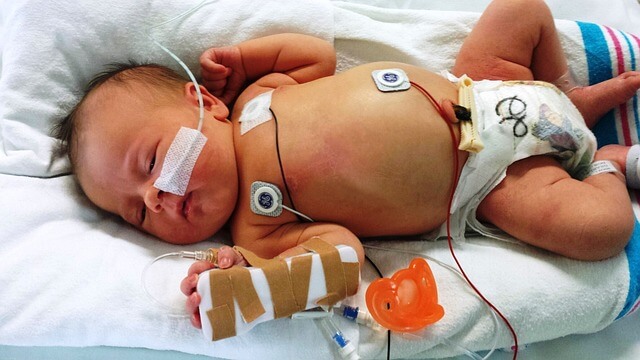
This is something you need to discuss with any providers you are considering if you are leaning towards a hospital birth. Ask them what they would consider good reasons or risk factors to induce early. Do you fall under any of those reasons or risks for why they might consider forcing an early labor? If so, do you agree that those risks are big enough to prefer the potential risks an early delivery might cause for your baby? These are things only you can decide.
Neonatal Mortality
The worst thing a mom can possibly imagine happening during or following delivery is the ultimate passing of her child. It gives me shivers to even think about it. Obviously, any mother would want to do anything in her power to avoid that horribly tragic outcome. Which leads to the question, is there more risk of infant mortality in hospital or home births? To answer this question, we turn again to the research.
The previously mentioned Oregon study concluded that there were more than twice as many perinatal (baby up to 28 days old) deaths in planned out-of-hospital births versus planned in-hospital births (3.9 vs. 1.8 per 1000 births), indicating intended home births (or birth center births) are riskier to the survival of the baby.
The results of a similar study were along the same lines. Published in the American Journal of Obstetrics and Gynecology, the Planned Home Births Study looked at 75,065 home births and 1,098,700 hospital births during the years 2009-2013. It found that neonatal deaths in home births were 9.35 per 10,000 (.935 per 1000) while neonatal deaths in hospitals were 3.59 per 10,000 (.359 per 1000).
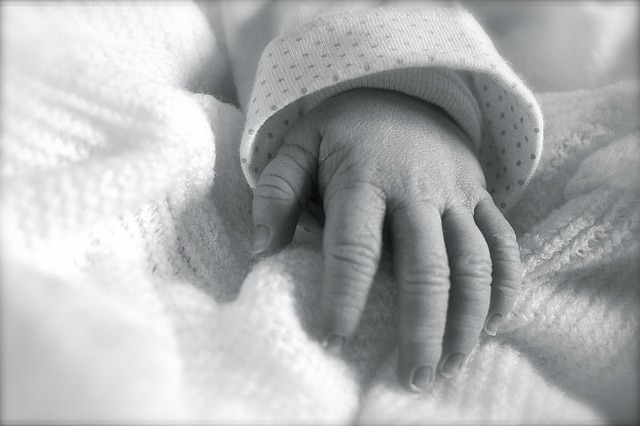
With similar home birth findings, another study published in Contemporary OB/GYN by Dr. Chervenak and Dr. Grunebaum reviewing data from the CDC (Centers for Disease Control), showed home births to have a neonatal mortality rate of 9.32 per 10,000 (.932 per 1000) births, although there are no comparison hospital neonatal mortality rates provided.
Another study comparing neonatal mortality rates in deliveries completed by certified midwives in a hospital to those completed by certified and non-certified midwives in home births for the years 2006-2009 also revealed better outcomes in a hospital setting. Of midwife attended hospital births, there were 3.2 neonatal deaths per 10,000 (.32 per 1000). Of the home births attended by certified midwives, there were 10 neonatal deaths per 10,000 (1 per 1000), and of home births attended by non-certified midwives, there were 13.7 per 10,000 (1.37 per 1000).

The difference in neonatal mortality for home births attended by certified versus non-certified midwives is disturbing considering 2 out of 3 midwives who attend home births are not certified In accordance with the recommendations of the AAP (American Academy of Pediatrics) and ACOG (American College of Obstetricians and Gynecologists) (Source).
With lower out-of-hospital neonatal morality rates, in The National Birth Center Study II, which looked at the outcomes of 15,574 birth center births in 33 states for the years 2007-2010, there were 0.47 stillbirths per 1000 and 0.40 newborn deaths per 1000. In a previous similar study conducted 25 years ago, these statistics were very similar at 0.3 stillbirths per 1000 and 0.3 newborn deaths per 1000. Unfortunately, there is, once again, no hospital data within this study to compare them against.
In another study looking at 5,418 planned home births, the neonatal mortality rate was 1.7 per 1000 births which was noted to be similar to mortality rates for low-risk hospital births by an article in Contemporary OB/GYN, however, this number is considerably higher than the hospital neonatal mortality rates I found.
To be honest, as I researched this aspect of home births versus hospital births, I was shocked at what I found. I fully expected home births to have lower rates of infant mortality due to my preference for doing things naturally and my aversion to unnecessary medical intervention. However, in this case, the statistics show better outcomes for the baby in a hospital.
Other Risks
There also appears to be mostly better outcomes in a hospital for the post-birth health of the baby. In the Oregon study, the odds of babies being transferred to the NICU were higher among planned in-hospital births, however, depressed 5 minute Apgar scores and neonatal seizures were more common in planned out-of-hospital births. Likewise, in Dr. Chervenak’s and Dr. Grunebaum’s study, home births had a higher risk than hospital births for 5 minutes Apgar scores of 0 as well as seizures or neurologic dysfunction.
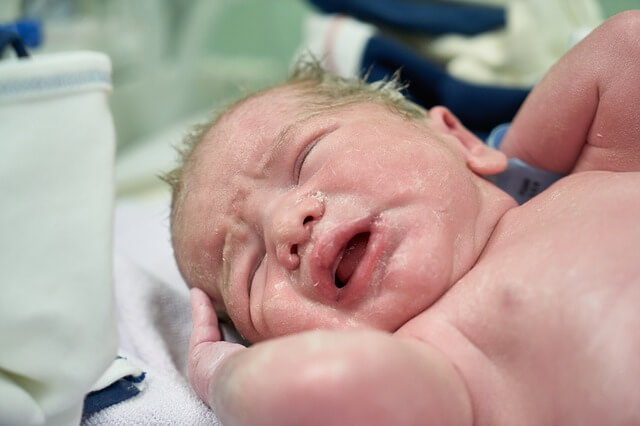
Outcomes for Mom
C-Section Overuse
To some expectant moms, a c-section may sound easier than going through all the pain and effort of pushing a baby out. But a c-section is a form of abdominal surgery and there are always risks involved with surgery (and with messing with the natural design of childbirth). The risks of having a c-section versus a vaginal delivery include infection, hemorrhage/more blood loss, organ injury, scar tissue, longer recovery, reaction to anesthesia or post partum pain medication, need for additional surgery if things go wrong, maternal mortality, and emotional struggles/difficulty bonding with baby (Source).
In light of these risks, it is shocking that the c-section rate in America is 32% (Source) while the WHO (World Health Organization) recommends a c-section rate of 10-15% (Source). While there are certainly legitimate medical reasons for c-sections, they are clearly overused. The WHO states that once the c-section rate exceeds 10% in a given population, there is no notable difference in survival outcomes for moms or babies.
There is a fine line when deciding if a c-section will save the life of the baby and/or mother or if it will cause unnecessary complications. Mayo Clinic states that “stalled” labor is the most common reason for c-sections. This is rather frightening considering a couple of studies have found that up to or close to half of the women c-sectioned for “failure to progress” had not yet reached 6 centimeters, which means they were not in active labor and may not have even truly been in labor (Source)!
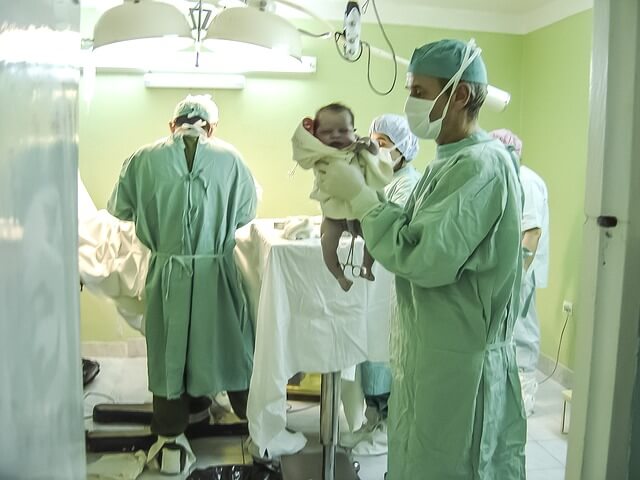
This overuse of c-sections in America is not without cost. NPR (National Public Radio) notes that the rising number of c-sections in the United States contributes to life-threatening complications for the mom. The APA (American Pregnancy Association) agrees that maternal mortality is more common with c-sections than with vaginal deliveries.
Women who have c-sections are also much more likely to have future c-sections (9 out of 10 as a matter of fact) and the risks involved in the procedure become greater with each subsequent c-section delivery. Despite these facts, hospital c-section rates have risen from 21% in 1996 to 32% presently. Conversely, birth center c-section rates have remained a consistent 4.4-6% for twenty years (Source).
Consequently, a home or birth center birth may provide you with a better outcome if you are concerned about ending up with an unnecessary c-section. If you’re at home or in a birth center, being attended by a “let nature take its course” minded midwife, you will not have a c-section unless it is truly medically necessary (at which point you would be transferred to a hospital). Check the c-section rates for both the hospitals and the individual providers in your area to figure out how big of an issue this could potentially be if you were to have a hospital birth.
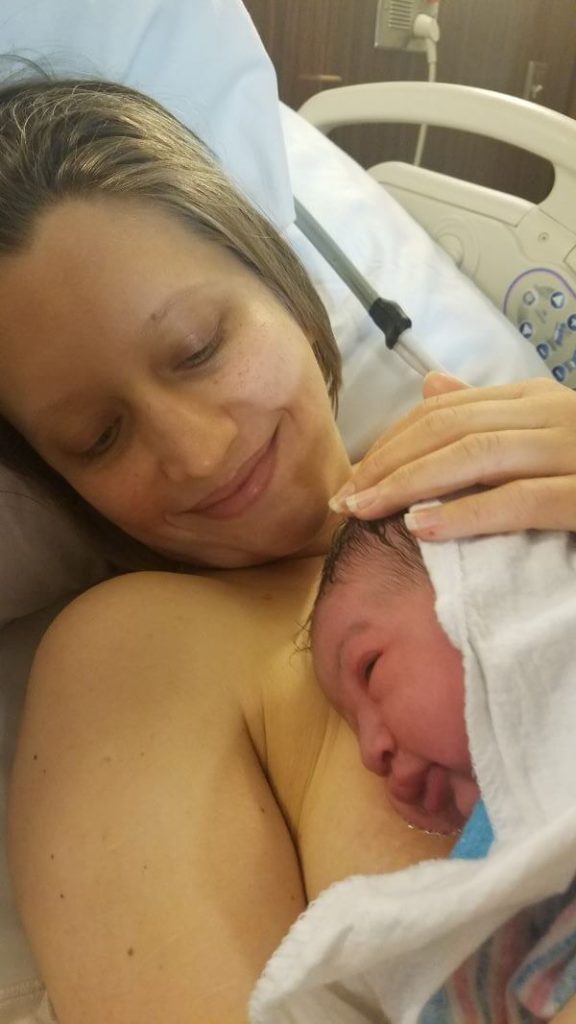
I was told by my doula after I delivered my daughter that if I had been at a different hospital that was not as natural birth friendly as the one where I delivered, I would have been c-sectioned simply because my labor took a total of 37 hours. This would have been deemed “failure to progress” at many hospitals, yet I delivered a completely healthy baby without a single sign of distress.
Maternal Mortality
Although moms considering home birth obviously desire less medical intervention (and for good reason), giving birth outside of a hospital also means less immediate help in the event of a true emergency. And since the United States’ maternal mortality rate has more than doubled between 1990 and 2013, going from 12 to 28 maternal deaths per 100,000 births (Source), it’s normal to wonder if home births have their own life-threatening risks.
Unfortunately, I was unable to find any data comparing maternal mortality rates in home and hospital births. The CDC explains the US maternal death rate (700 women per year) is too small to be analyzed with differentiation between physician and midwife managed pregnancies.
However, one of the explanations the CDC offers for the increase in maternal mortality is the fact that more and more pregnant women have pre-existing diseases such as hypertension, diabetes and chronic heart disease. The number one cause of maternal death for the years 2011-2014 was cardiovascular disease followed by non-cardiovascular diseases.
But this does not mean the majority of maternal deaths are unavoidable. As a matter of fact, 60% of maternal deaths are preventable (Source)! This fact is validated by the drastic improvement California has made in it’s maternal mortality rates. Through an intensive program – which involves comprehensive training manuals for instructing care providers in handling maternal complications and data collection to ensure the procedures are being followed – the state has reduced its maternal mortality rate by 55% between 2006 and 2013 (Source).

Although the relative risk of death for an expectant mom is still fairly low, it is concerning that, for the country as a whole, it is currently on an uptrend. Is it possible that home births fair better in this regard? Unfortunately, there just isn’t enough data to know for sure, but some of the previously mentioned studies provide a limited comparison of hospital versus home birth maternal complications.
Post Partum Hemorrhage
In the previously mentioned Oregon study, complications in the mother were rare regardless of birth location, although the odds of the mom needing a blood transfusion were higher among planned out-of-hospital births. The National Birth Center Study II similarly reported post partum hemorrhage as the most common reason for post partum transport to the hospital, although most post partum hemorrhages were easily handled at the birth center.

I experienced post partum hemorrhage with my delivery, and it was very quickly handled by the doctor with a dose each of IV Pitocin and Cytotec. Later on, when I asked my doula how hemorrhage is handled in home births, she assured me the attending midwife brings Pitocin and Cytotec in shot form for that purpose.
Are you considering hiring a doula? Click here to receive a FREE printable of questions to ask during doula interviews.
However, only Certified Nurse Midwives can administer medication, meaning that if you have a Certified Midwife or lay midwife and require medication for any reason, you will have to be transferred to a hospital (Source).
Conclusion
I personally believe you and your baby’s outcome has far more to do with your care provider than where you give birth. I strongly agree with Dr. Chervenak’s and Dr. Grunebaum’s statement in their article: “It is also imperative that obstetricians create a home-birth-like setting in the hospital and encourage collaboration with certified nurse-midwives as valued and respected professional members of the obstetric care team.”
If your care provider (and his or her team) is completely supportive of your ideal birth and you are confident in his or her experience and abilities not only in delivering your baby, but in handling unexpected emergencies that may come up, the location of the birth is not as important as that.
In line with that, it is quite interesting to note that in Dr. Chervenak’s and Dr. Grunebaum’s article, their analysis of home and hospital births revealed that hospital births attended by midwives had better outcomes than those attended by physicians. In labor and delivery, it’s not all about location, location, location.
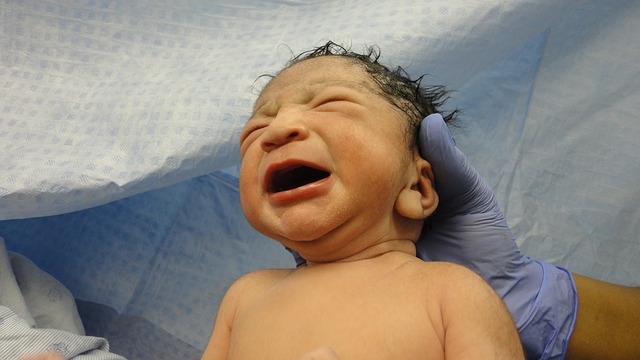
I was blessed to have what I feel was the best of both worlds. I gave birth in a hospital that is very natural birth friendly with my baby being delivered by a doctor who worked amicably with the midwife who oversaw my care throughout my pregnancy. I had a supportive, natural environment to give birth in with resources available in the event of an emergency.
Unfortunately, not everyone has the option of a hospital that is this supportive of natural birth and you may be worried about feeling pressured into unwanted interventions, or you may have other reasons for specifically wanting to have a home birth. Ultimately, only you can make the best decision for your situation as to who will deliver your baby in what setting.
Did you find this post informative? Help your fellow mamas out by using the share buttons below to spread the knowledge!




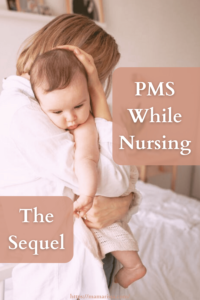

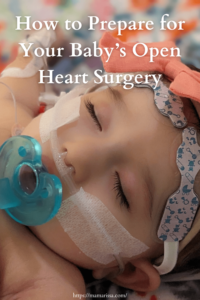


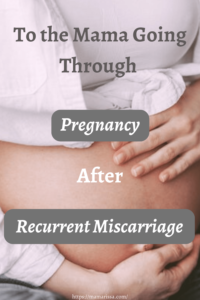

Leave a Reply